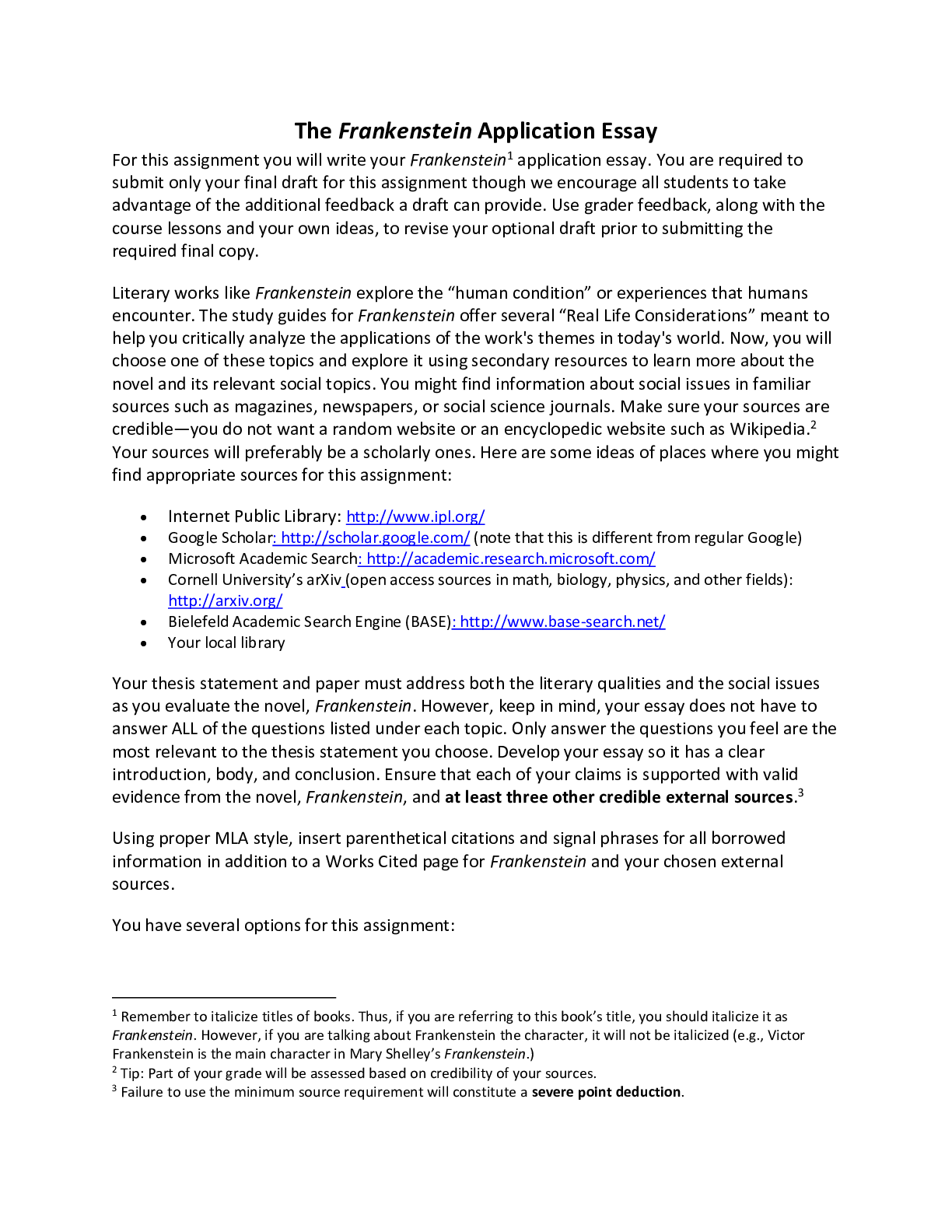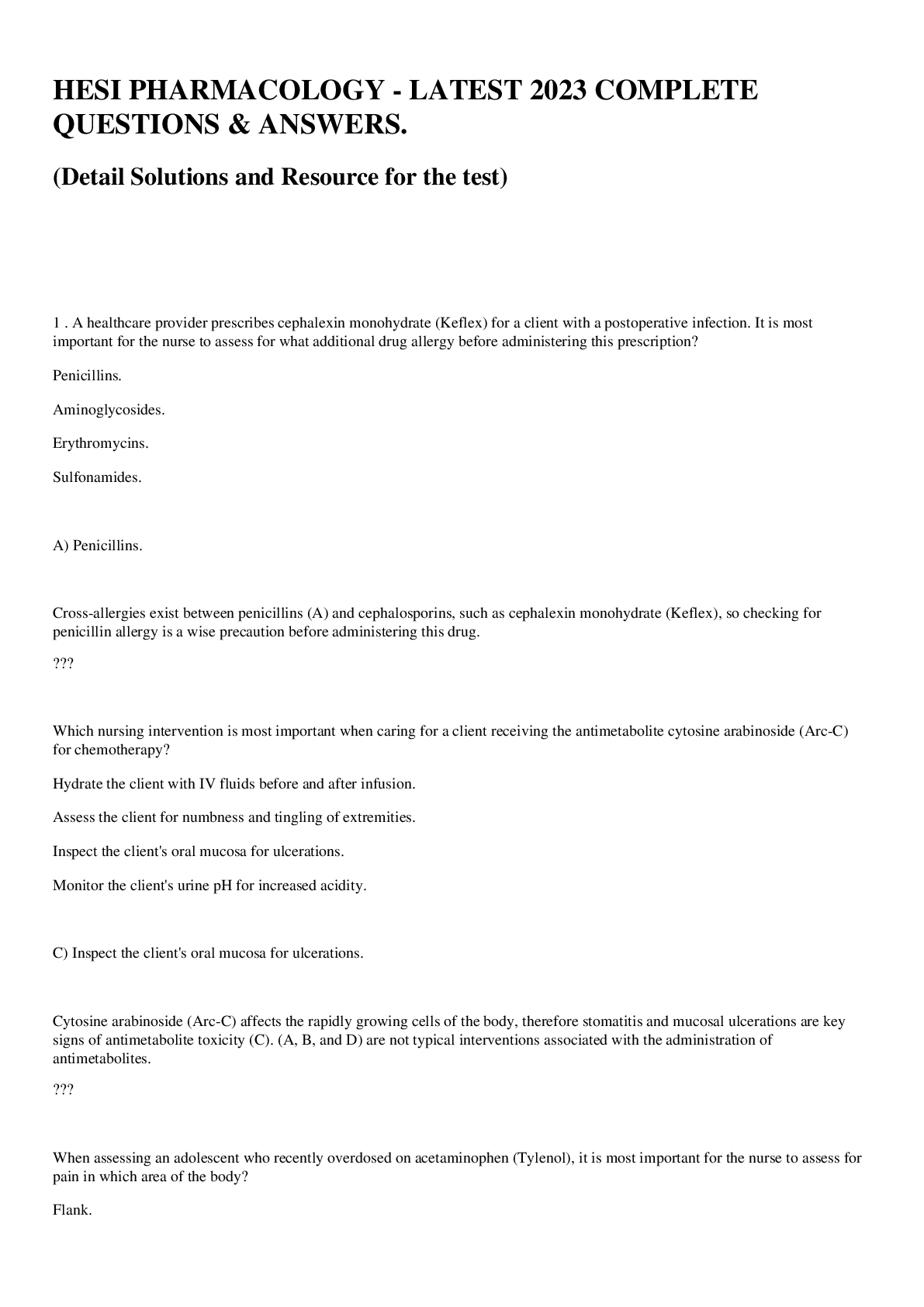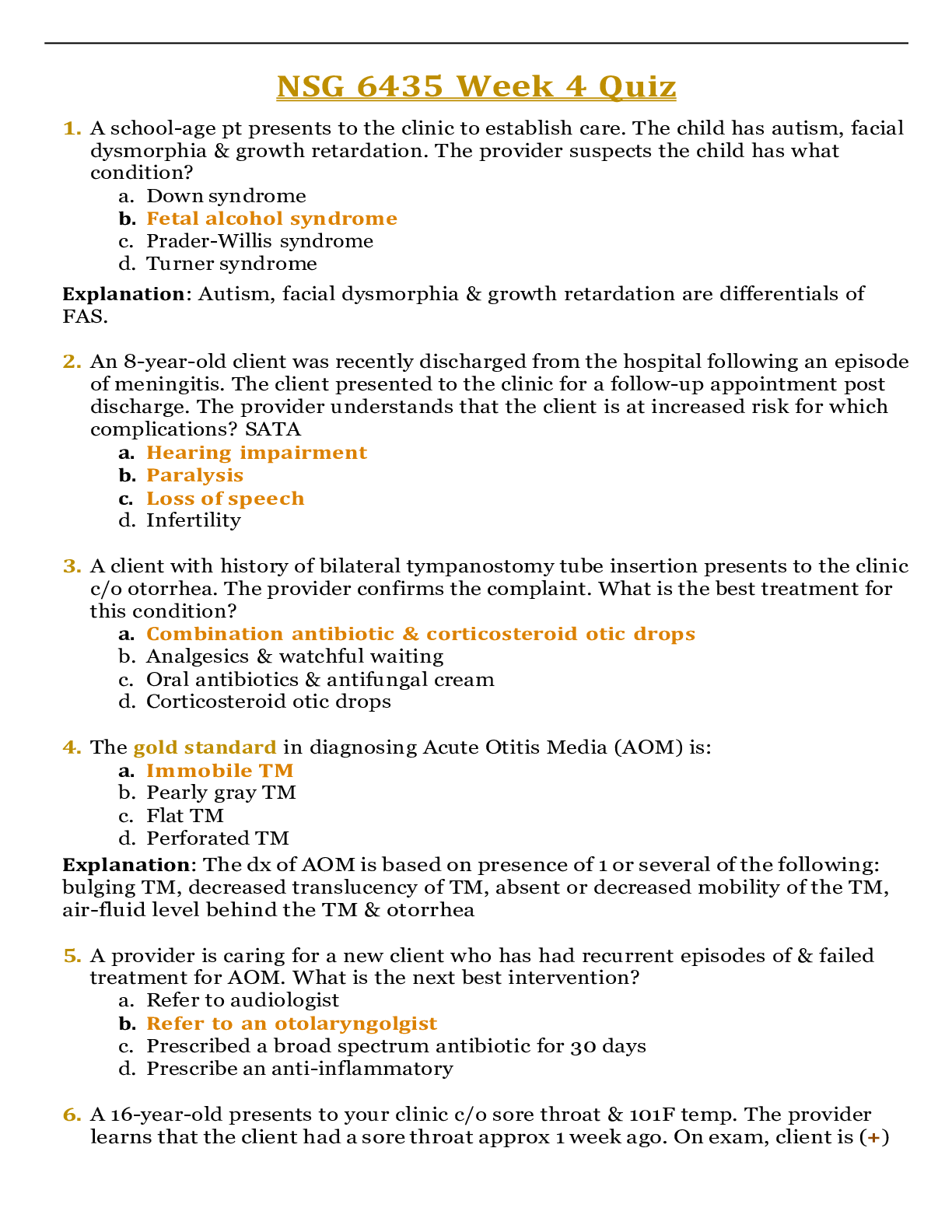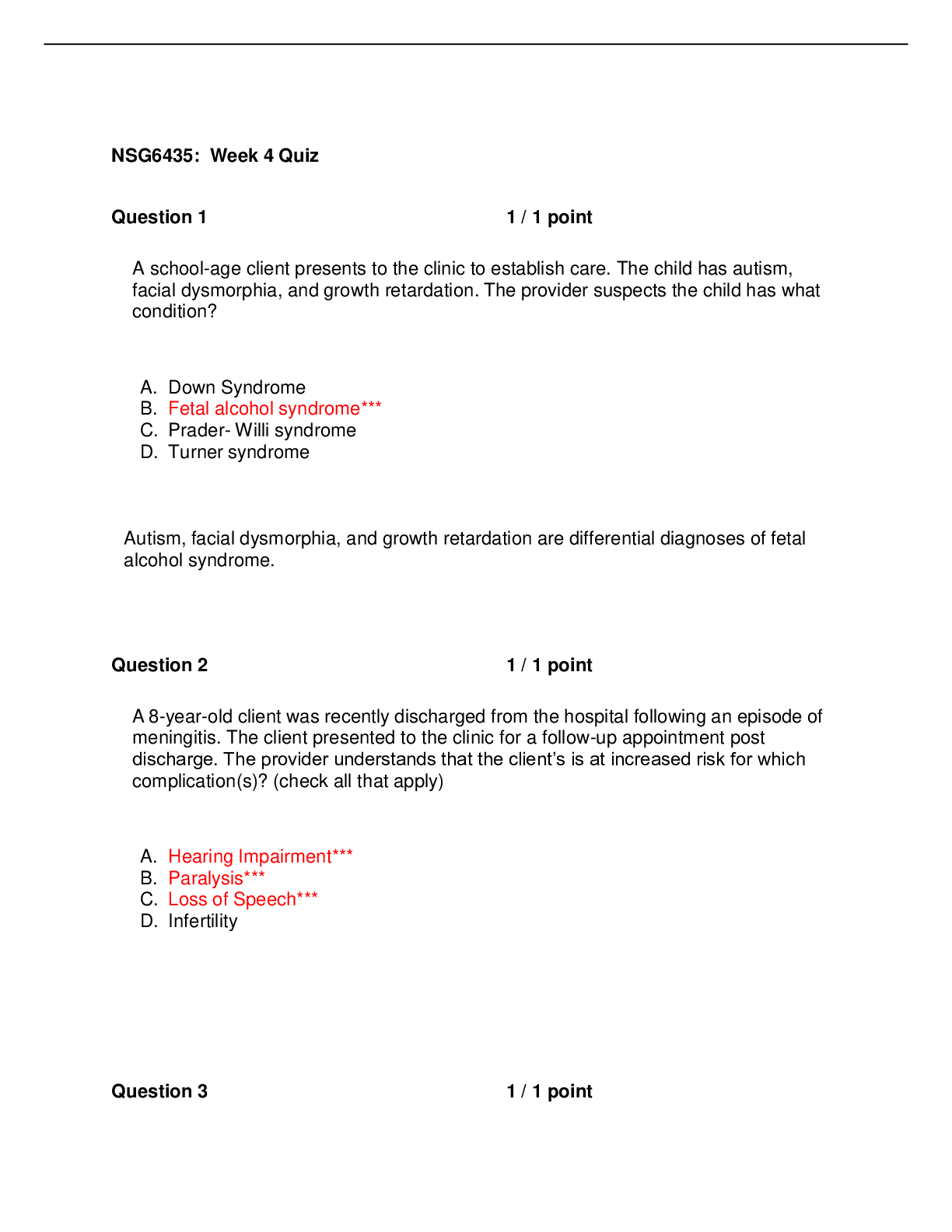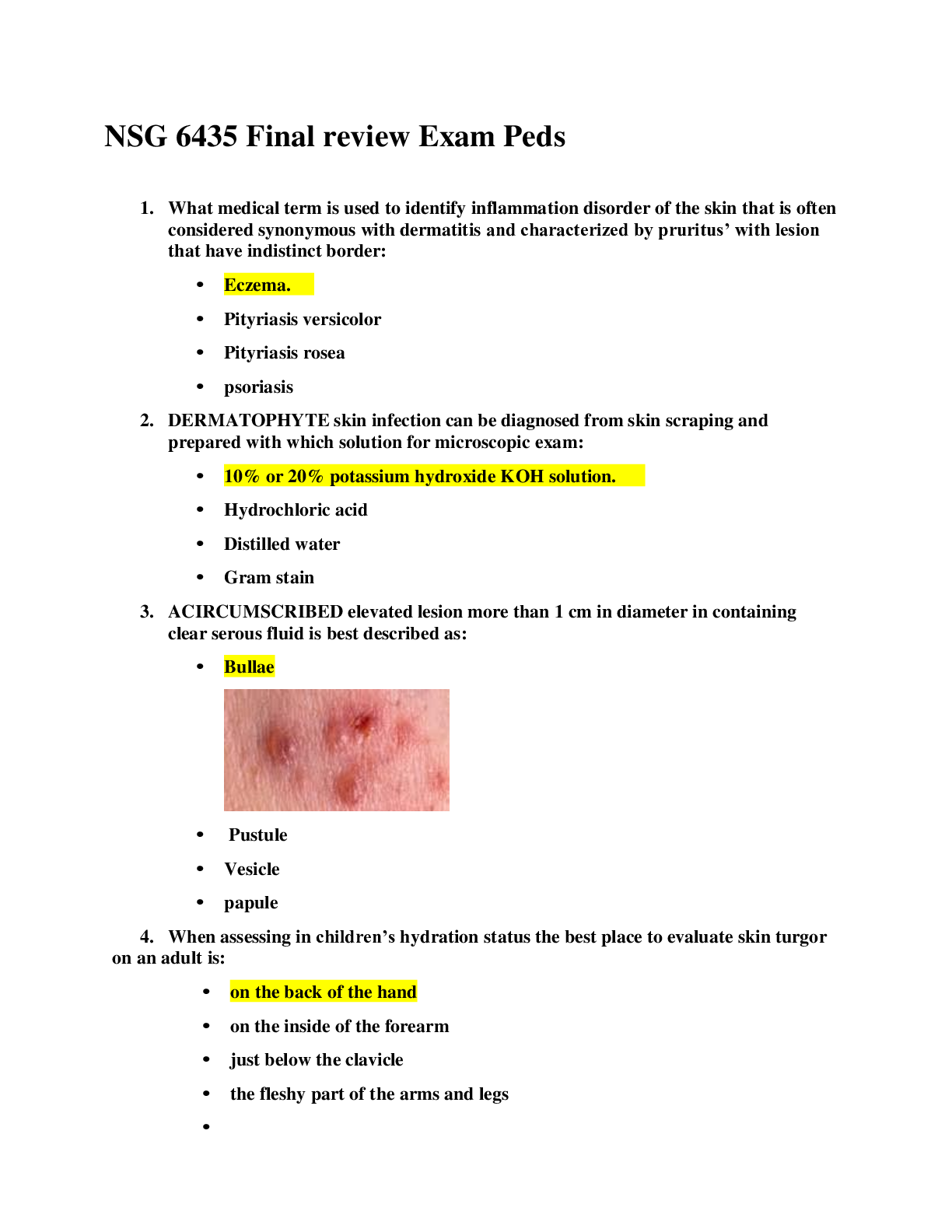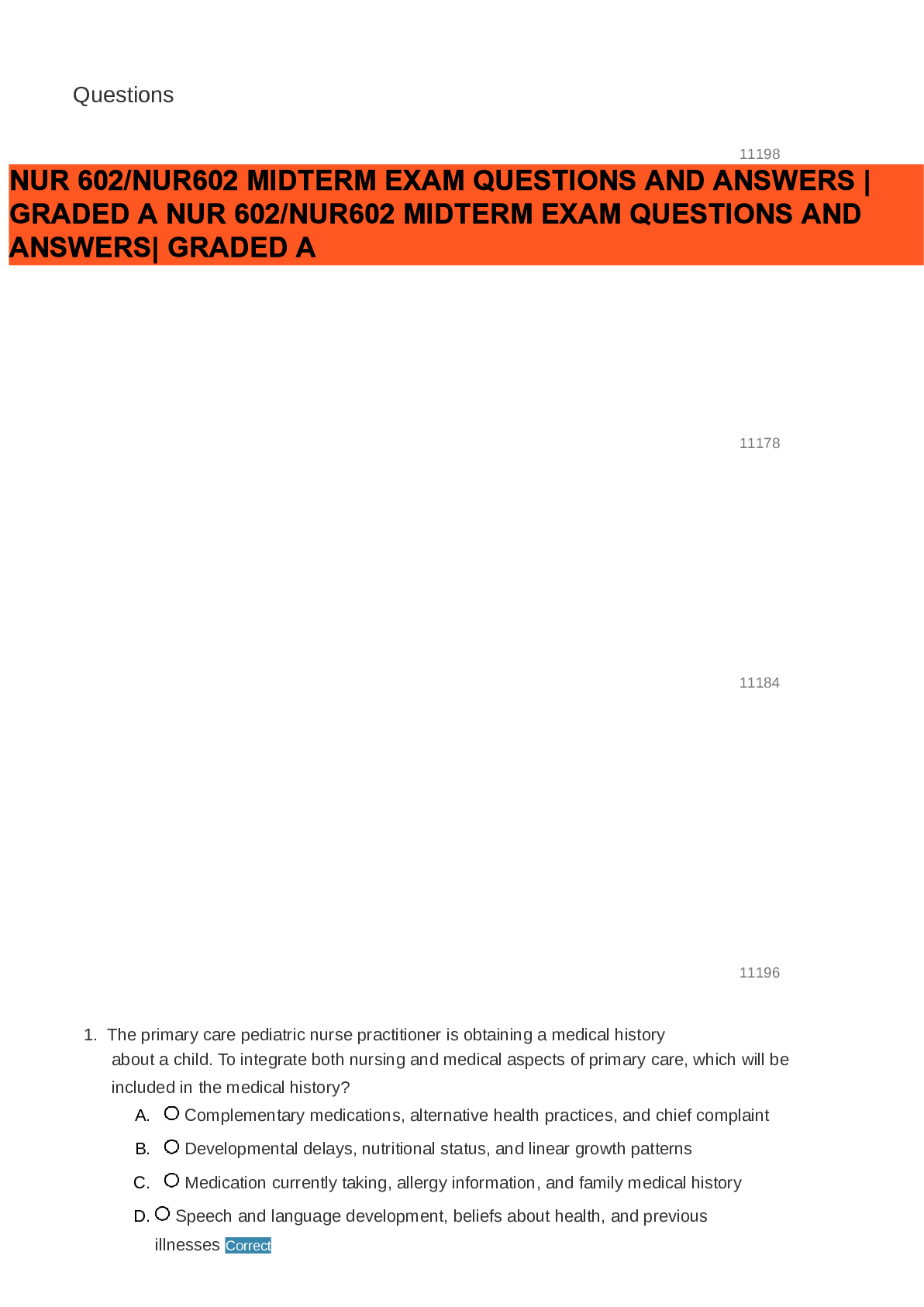Law > QUESTIONS & ANSWERS > TUTORIAL LETTER 201/1/2019 Fundamental Rights FUR2601 Semester 1 (All)
TUTORIAL LETTER 201/1/2019 Fundamental Rights FUR2601 Semester 1
Document Content and Description Below
1. The indirect application of the Bill of Rights means that law or conduct is found unconstitutional and a constitutional remedy is provided. (2) 1) False, the indirect application of the Bill of R... ights means, that rather than finding law or conduct unconstitutional and providing a constitutional remedy, a court applies ordinary law, but interprets or develops it with reference to the values in the Bill of Rights. 2) True, indirect application of the Bill of Rights refers to unconstitutionality and always a constitutional remedy. 3) False, indirect application of the Bill of Rights refers to a combination of interpretation in accordance with the values of the Bill of Rights including awarding a declaration of invalidity. 4) The indirect application of the Bill of Rights means that law or conduct is found unconstitutional and a constitutional remedy is provided, only in relation to state conduct. 2. The South African Broadcasting Corporation (SABC) can invoke the right to freedom of expression. (2) 1) True, because all the rights in the Bill of Rights are for everyone, which includes both natural and juristic persons. 2) False, because the nature of the SABC is such that exercising this right is not part of its business. 3) False, because the nature of this right is such that it cannot be exercised or invoked by a juristic person. 4) True, because there is nothing about the nature of this right that makes it impossible for juristic persons to invoke it. 3. The general limitation clause can meaningfully be applied to all rights in the Bill of Rights. (2) 1) True, because all rights are textually unqualified. 2) True, because all rights have demarcations. 3) False, because some provisions contain internal demarcations that repeat the phrasing of section 36. 4) False, because some provisions contain external demarcations that repeat the phrasing of section 36. 4. Formal equality refers to sameness of treatment. (2) 1) True, because this means that the law must treat individuals the same regardless of their circumstances. 2) False, because it requires an examination of the actual social and economic differences between groups and individuals. 3) True, because formal equality refers to the sameness of treatment only in the workplace. 4) False, because substantive equality refers to sameness of treatment. 5. S v Makwanyane is a clear example of the indirect application of the Bill of Rights were the Constitutional Court found that section 277 of the Criminal Procedure Act 51 of 1977, was unconstitutional and therefore invalid. (2) 1) True, the applicable sections in the Bill of Rights were indirectly applied which allowed for a declaration of invalidity in terms of section 172 of the Constitution. 2) False, the applicable sections in the Bill of Rights were directly applied which allowed for a declaration of invalidity in terms of section 172 of the Constitution. 3) True, the Constitution can only be applied indirectly in all circumstances in terms of the principle of avoidance. 4) False, the Bill of Rights was indirectly applied and referred to the South African Human Rights Commission to provide a suitable remedy. 1.2 SECOND COMPULSORY ASSIGNMENT Question: The Ubuntu University’s sole language of instruction is English, after a new language policy, with English as the sole language of instruction, was adopted. Before the adoption of the policy, Afrikaans and English were used as dual languages of instruction. Some students, who had previously had the opportunity to study in Afrikaans felt that: “In a country with eleven official languages, the mediums of instruction must rather be expanded to include more languages instead of languages being taken away and institutions becoming anglicised.” They decide to take the matter to the Constitutional Court to challenge the new language policy. Against the background of the hypothetical case scenario, refer to the relevant provisions of the Constitution and applicable case law when responding to the following questions: 1) Some Students would like to approach the Constitutional Court directly as they feel that several of their fundamental Rights have been infringed. a. Identify some of the rights that are possibly infringed by the University. (3) Answer: The right to equality - Section 9 The right to education - Specifically Section 29(2) The right to language and culture - Section 30 b. Discuss whether the students can approach the Constitutional Court directly. (2) [Show More]
Last updated: 2 years ago
Preview 1 out of 8 pages

Buy this document to get the full access instantly
Instant Download Access after purchase
Buy NowInstant download
We Accept:

Reviews( 0 )
$12.00
Can't find what you want? Try our AI powered Search
Document information
Connected school, study & course
About the document
Uploaded On
Jun 08, 2021
Number of pages
8
Written in
Additional information
This document has been written for:
Uploaded
Jun 08, 2021
Downloads
0
Views
115




